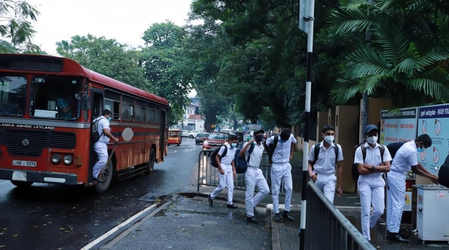Colombo, 9 June (IANS). According to local media reports, Sri Lankan Ministry of Education has issued instructions to prevent dengue and chikungunya from spreading in schools across the country.
According to the new instructions, legal action can be taken against the school principal if the mosquito breeding site is found in the school premises during inspection.
The ministry said on Sunday that each school should run a program to eliminate mosquito breeding sites, along with educational activities without any hindrance.
The Ministry has sent notices to inform the principal of all public and government, heads of religious schools, Dean of National College of Education and other educational institutions and heads of other educational institutions and provincial offices.
According to the ‘Xinhua News Agency’ report, the ministry has directed to inspect the schools from time to time.
Dengue and chikungunya cases are increasing in Sri Lanka. According to the World Health Organization, dengue can take the form of an infection or mild disease to a serious disease. It is estimated that 1 out of 4 victims show symptoms of dengue virus.
Identifying initial symptoms and starting treatment immediately can reduce mortality.
Symptoms include high fever, headache, rash and muscle pain. It can also cause nausea and vomiting. In severe cases, problems such as severe bleeding and shock are seen, which can be a threat to life.
Talking about its treatment, fluids and pain relieving medicines can occur. In severe cases, the patient may be required to be hospitalized.
On the other hand, chikungunya is a mosquito -borne viral disease, which causes fever and joint pain. This is caused by a ribonucleic acid (RNA) virus.
The name ‘Chikungunya’ is derived from a word in Kimakde language of South Tanzania, which means ‘he who bows upwards’, describes the patient suffering from joint pain during this disease.
Chikungunya virus (CHIKV) spreads into humans by cutting infected female mosquitoes, usually from Aedes aept and Aedes albopictus mosquito. Both these species can also spread other viruses including ‘dengue’ and ‘Zika virus’. They often cut in daylight, especially in the morning and afternoon.
The CHIKV was first identified in the United Republic of Tanzania in 1952 and then in Africa and other countries of Asia. Its outbreak in the city was first seen in Asia in the 1970s. Its outbreak has increased since 2004.
The first local matters of chikungunya spreading from mosquitoes in the US were reported in late 2013, after which most of the countries of the region saw a large -scale outbreak. Chikungunya cases have so far been seen in 110 countries in Asia, Africa, America and Europe.
-IANS
RSG/KR









